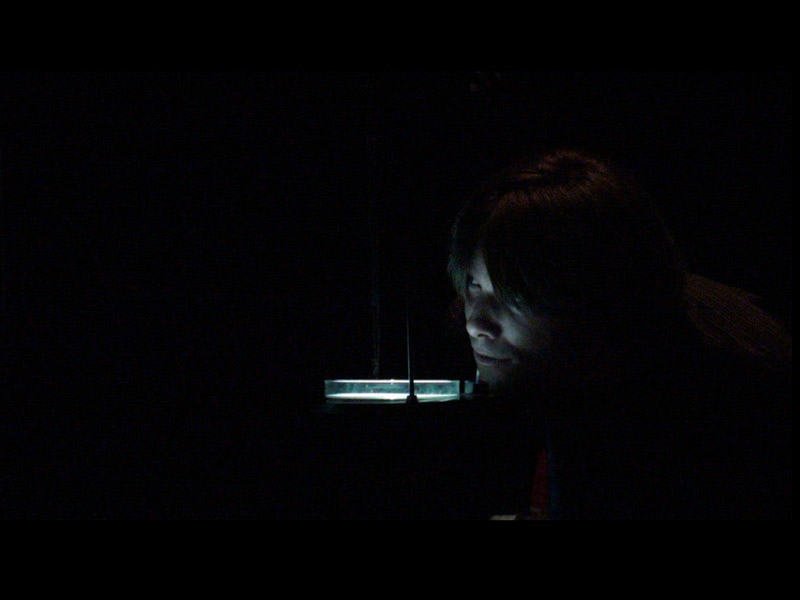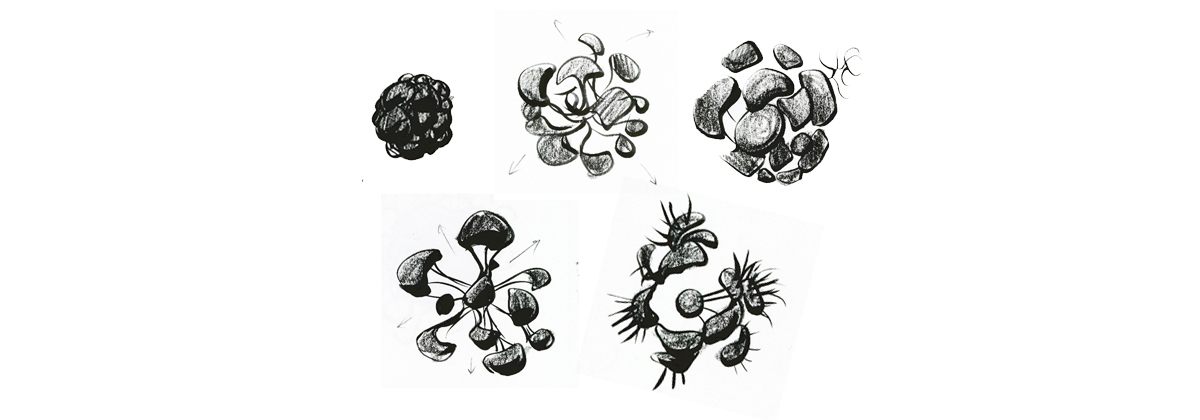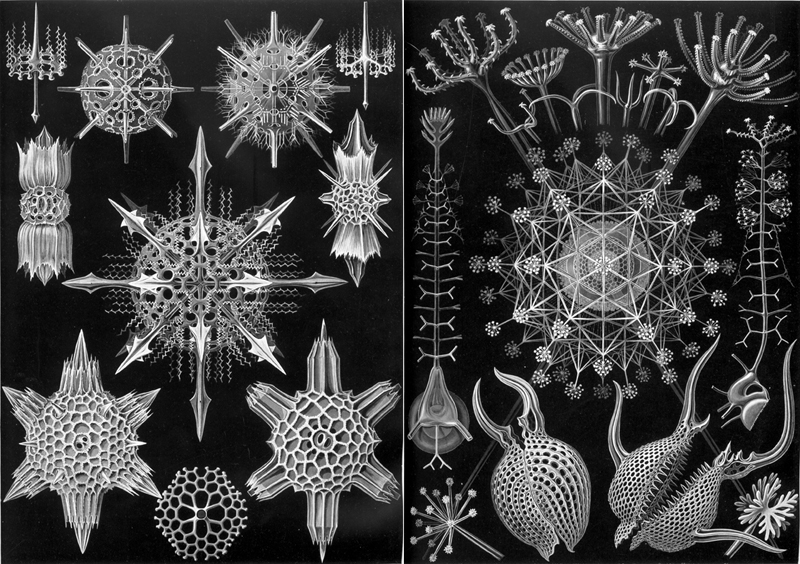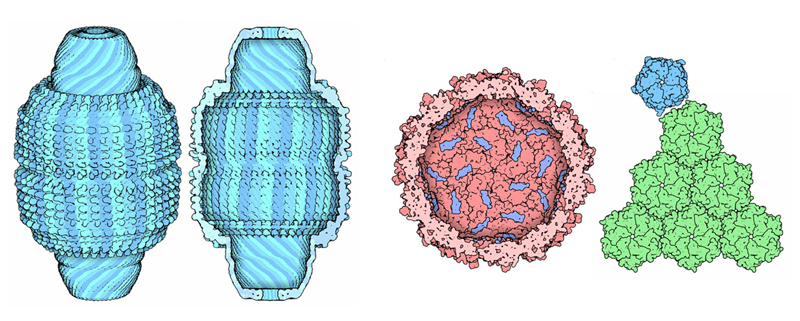
Photo by Yoon Chung Han: http://yoonchunghan.com/

Photo by Yoon Chung Han: http://yoonchunghan.com/
"One" was conceived and executed with Yoon Chung Han and Erick Oh for the Biologic Gallery at Siggraph 2009 in New Orleans. Mubbasir Kapadia provided technical advice. We created an interactive installation that presents the audience with a artificial microcosm, using 4 different kinds of input as stimuli: orientation, breath, light, and sound.
Since then it has been shown in Hong Kong, Seoul, Edinburgh ( at the Inspace Gallery ) and at the University of Akron, Ohio. It also won the Jury Recommendation at Japan Media Arts Festival 2009, and was a semi finalist in Interaction Design in the 2009 Adobe Design Awards.

A doodle between myself and Erick while we were coming up with the project :)

some of Erick's awesome sketches: http://erickoh.com/
Above you can see some of the first concept sketches for the project by myself and Erick. We were just doodling and chatting.

A pencil sketch I did in 2007

A pencil sketch I did in 2007
This installation is partially meant as a joke about the objectivity of science, but it's also a celebration of creativity. Above you can see some of my storyboard sketches for a scientific animation from 2007. I worked in this field for many years, trying to help scientists communicate their ideas clearly but also in a compelling way. As you can see above, there was a constant tension (sometimes useful) between my creative impulses and the intent of the research. The former stemmed from a desire to express emotion, and the latter stemmed from a desire to derive fact from conjecture.


This subject is a rich field filled with interesting dialogue - for instance C.P. Snow's article "The Two Cultures." Despite having worked in the field I can't claim to be that literate in all of these conversations. Here I guess it will be good enough to say that the relationship between art and science over the last few centuries has changed in interesting ways. For instance characters like Earnst Haeckel (1834-1919) or Anthony Van Leeuwenhoek(1634-1723) were hybrid inventor/dreamers who didn't necessarily follow a strict objective agenda. Haeckel's beautiful catalogues of microscopic organisms are inspiring to me. The comparatively simplistic renderings of "animalcules" by Van Leeuwenhoek are interesting to me because they represent the work of a pioneer.

One aspect of this "lost" hybrid culture that is particularly interesting in my opinion is optics - something the painter David Hockney explores in his book Secret Knowledge. Below you can see some photographs from this book, where Hockney is testing his home-made camera obscura. It is Hockney's theory that concave mirrors and lenses enabled renaissance era painters like Caravaggio to create images and represent space in a new way. The symbolic and narrative innovations enabled by this new style arguably helped foment the philosophical revolutions of this era.

Today there are some amazing new ways of representing information and analyzing the natural world that are changing our understanding of how things work as well as our world view. I think the way that we are coming into an understanding of our mechanics as an organism as well as our impact on the planet through the internet is really interesting. And self expression seems to be a guiding but chaotic force in these new media, just like before.


